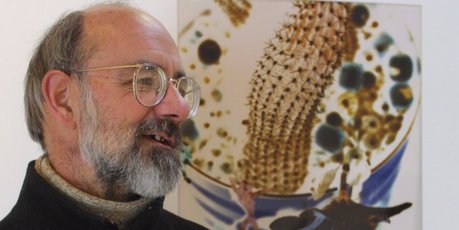 Wanganui artist Peter Ireland who exposed a fake Gottfried Lindauer
painting at the Waikato Museum of Art and History says there are plenty
more forgeries out there to be uncovered.
Wanganui artist Peter Ireland who exposed a fake Gottfried Lindauer
painting at the Waikato Museum of Art and History says there are plenty
more forgeries out there to be uncovered.Ireland said it took 10 months from the time he spotted the forgery hanging in the Hamilton museum till its owners, charity Trust Waikato, took action and had the work investigated.
The matter is now with the police and the trust has brought in the lawyers.
The painting is of Tainui chief Kewene Te Haho. The painting was brought by the trust at auction in 2001 for $121,000.
Ireland suspects the painting may be the work of forger Karl Sim, who took the name of the artist he most often replicated, CF Goldie. Ireland said he came across the painting while at an exhibition for a fellow Wanganui artist, potter Paul Maseyk.
"I was nosing round the museum and saw the Lindauer on a wall. It too just two minutes looking at it to release it wasn't a Lindauer.
"I've seen a dozen or more in the Whanganui Regional Museum so I know what a real Lindauer looks like."
Ireland said he has been in the art world for more than 45 years and has done registration work for many galleries, which involves condition reports on paintings.
"Everything about this one was wrong. The lighting in it, the anatomical treatment of the ear and head ... there was no ageing on the painting.
"It was immediately absolutely obvious."
Ireland wrote to the curator of the exhibition and though he got a reply, there was no follow up on the information. He then went to the collections manager at the museum but it wasn't until trust chief executive Bev Gatenby was contacted last July and colonial art expert Roger Blakley was brought in that any action was taken.
Auckland Art Gallery conducted forensic testing and the University of Auckland tested the painting with sounds waves.
"The soundwaves testing is fascinating. They tested it against several other Lindauer works and the painting had different results to all the others."
In the Waikato Times newspaper earlier this month, Mr Blakley called the painting a "good fake".
Ireland said the provenance of the fake painting is "murky".
"It was found in Scotland by a New Zealander in the early 1990s. It was on sold to a private collector by Webbs and then bought by the Trust Waikato charity from International Art Centre.
He said the art world is full of "shenanigans like this".
"There's a conspiracy of silence in the art world over these things. But if something is hanging in a public art gallery and the label says it's by someone then we need to make sure people know it is by that person. It's a trust issue."
"There's a real lack of accountability and transparency here - something that's essential for both the public interest and the business of selling art. Those two words ... the more we seem to use them the rarer they are actually true."
Ireland said he expected more forgeries to be found out like this.
No comments:
Post a Comment